
From Here to There: The Art and Science of Finding and Losing Our Way
By: Michael Shaw Bond
Format: 304 pages, Hardcover
A wise and insightful exploration of human navigation, what it means to be lost, and how we find ou…
Want to Read $ 9.99"On the island of Igloolik, where Aporta has conducted much of his research, a good navigator is known by the term 'aangaittuq', which means 'attentive'. Aangaittuq describes not just a person's wayfinding savvy, but their whole attitude to life. 'Being a good wayfinder is no different from being a good provider', Aporta has said, 'as both hunting and wayfinding are parts of the broader tasks of dwelling."-Michael Shaw Bond, From Here to There: The Art and Science of Finding and Losing Our Way
"On the island of Igloolik, where Aporta has conducted much of his research, a good navigator is known by the term 'aangaittuq', which means 'attentive'. Aangaittuq describes not just a person's wayfinding savvy, but their whole attitude to life. 'Being a good wayfinder is no different from being a good provider', Aporta has said, 'as both hunting and wayfinding are parts of the broader tasks of dwelling."-Michael Shaw Bond, From Here to There: The Art and Science of Finding and Losing Our Way
"When you're reading a conventional map, north is generally straight ahead, though this is entirely artefact of map-making culture and has no effect on orientation. Medieval European maps were 'east up', in line with Christian sensibilities, and early Islamic maps were orientated in the direction of Mecca. Whatever was important went at the top. 'North up' maps became commonplace during the sixteenth century, when European explorers began to make extensive journeys using the North Star and the (northward-pointing) compass to navigate. Since then, the idea of north has taken on an importance in people's imaginings: a place to strive for, or one that seems forever out of reach. A standard compass needle will assure you that there is always more north to be had, except when you reach the North Pole itself, at which point the needle will spin like a lost soul, confounded by its goal."-Michael Shaw Bond, From Here to There: The Art and Science of Finding and Losing Our Way
"When you're reading a conventional map, north is generally straight ahead, though this is entirely artefact of map-making culture and has no effect on orientation. Medieval European maps were 'east up', in line with Christian sensibilities, and early Islamic maps were orientated in the direction of Mecca. Whatever was important went at the top. 'North up' maps became commonplace during the sixteenth century, when European explorers began to make extensive journeys using the North Star and the (northward-pointing) compass to navigate. Since then, the idea of north has taken on an importance in people's imaginings: a place to strive for, or one that seems forever out of reach. A standard compass needle will assure you that there is always more north to be had, except when you reach the North Pole itself, at which point the needle will spin like a lost soul, confounded by its goal."-Michael Shaw Bond, From Here to There: The Art and Science of Finding and Losing Our Way
If you liked the science plot in From Here to There: The Art and Science of Finding and Losing Our Way by Michael Shaw Bond , here is a list of 11 books like this:

1. Bigger Leaner Stronger: The Simple Science of Building the Ultimate Male Body
By: Michael Matthews
Format: 327 pages, Paperback
If you want to be muscular, lean, and strong as quickly as possible without steroids, good genetics… read more
Want to Read $ 2.99Similar categories in Michael Matthews's Bigger Leaner Stronger: The Simple Science of Building the Ultimate Male Body book and Michael Shaw Bond's From Here to There: The Art and Science of Finding and Losing Our Way
- self help
- science
- nonfiction
- audiobook

2. Judas: een familiekroniek
By: Astrid Holleeder
Format: 571 pages, Paperback
Een valse hond sluit je op in een hok, of laat je inslapen.’ Astrid en Sonja Holleeder besluiten i… read more
Want to Read $ 11.99Similar categories in Astrid Holleeder's Judas: een familiekroniek book and Michael Shaw Bond's From Here to There: The Art and Science of Finding and Losing Our Way
- nonfiction
- audiobook
"Ik zou het ook van me af willen zetten. Maar ik weet niet hoe ik moet stoppen eraan te denken. Hoe doe je dat dan?' 'Nou As, wist je dat er elke dag twee mensen in het verkeer omkomen?' 'Nee.' 'Elke …"-Astrid Holleeder, Judas: een familiekroniek
3. My Face for the World to See
By: David Thomson , Alfred Hayes
Format: 208 pages, Paperback
Alfred Hayes is one of the secret masters of the twentieth century novel, a journalist and scriptwr… read more
Want to ReadSimilar categories in David Thomson's My Face for the World to See book and Michael Shaw Bond's From Here to There: The Art and Science of Finding and Losing Our Way
4. Cannibalism: A Perfectly Natural History
By: Bill Schutt , None
Format: 210 pages, Hardcover
For centuries scientists have written off cannibalism as a bizarre phenomenon with little biologica… read more
Want to ReadSimilar categories in Bill Schutt's Cannibalism: A Perfectly Natural History book and Michael Shaw Bond's From Here to There: The Art and Science of Finding and Losing Our Way

5. Children of Ash and Elm: A History of the Vikings
By: Neil Price
Format: 656 pages, Hardcover
The Viking Age - between 750 and 1050 - saw an unprecedented expansion of the Scandinavian peoples.… read more
Want to Read $ 16.99Similar categories in Neil Price's Children of Ash and Elm: A History of the Vikings book and Michael Shaw Bond's From Here to There: The Art and Science of Finding and Losing Our Way
- nonfiction
- history
- audiobook
"The Viking mind is far away from us today, but occasionally just about tangible."-Neil Price, Children of Ash and Elm: A History of the Vikings
"Free will existed, but exercising it inevitably led to becoming the person you always, really, had been."-Neil Price, Children of Ash and Elm: A History of the Vikings
"History is nothing if not a suppositional discipline, sometimes akin to a sort of speculative fiction of the past."-Neil Price, Children of Ash and Elm: A History of the Vikings
"There is a sense in which this viewpoint is looking through the wrong end of the historical telescope, defining (and often judging) a people solely by the consequences of their actions rather than th…"-Neil Price, Children of Ash and Elm: A History of the Vikings

6. Islands of Abandonment: Life in the Post-Human Landscape
By: Cal Flyn
Format: 376 pages, Hardcover
Investigative journalist Cal Flyn's ISLANDS OF ABANDONMENT, an exploration of the world's most deso… read more
Want to Read $ 10.99Similar categories in Cal Flyn's Islands of Abandonment: Life in the Post-Human Landscape book and Michael Shaw Bond's From Here to There: The Art and Science of Finding and Losing Our Way
- audiobook
- history
- travel
- nonfiction
- nature
- science
"But the unplanned nature preserves that have formed up in the buffer zones have come to serve as a focus for bilateral cooperation after hostilities are over."-Cal Flyn, Islands of Abandonment: Life in the Post-Human Landscape
"Further back, cooling ponds strewn with rusted pipes were busy with teals and moorhens. An old concrete streetlight stood incongruously in the woods beyond: some ravaged Narnia. Jays catcalled overhe…"-Cal Flyn, Islands of Abandonment: Life in the Post-Human Landscape
"This is a corrupted world, yes - one long fallen from a state of grace - but it is a world too that knows how to live. It has a great capacity for repair, for recovery, for forgiveness - of a sort - …"-Cal Flyn, Islands of Abandonment: Life in the Post-Human Landscape
"And so for a hundred years a forest grew up across the land, tall and dark and impenetrable, whose undergrowth curled and snarled into a thicket of bramble and black thorn. This was a forbidden fores…"-Cal Flyn, Islands of Abandonment: Life in the Post-Human Landscape

7. The Nutmeg's Curse: Parables for a Planet in Crisis
By: Amitav Ghosh
Format: 336 pages, Hardcover
In this ambitious successor to The Great Derangement, acclaimed writer Amitav Ghosh finds the origi… read more
Want to Read $ 2.99Similar categories in Amitav Ghosh's The Nutmeg's Curse: Parables for a Planet in Crisis book and Michael Shaw Bond's From Here to There: The Art and Science of Finding and Losing Our Way
- nonfiction
- history
- nature
- science
"This is the great burden that now rests upon writers, artists, filmmakers, and everyone else who is involved in the telling of stories: to us falls the task of imaginatively restoring agency and voic…"-Amitav Ghosh, The Nutmeg's Curse: Parables for a Planet in Crisis

8. Our Moon: How Earth's Celestial Companion Transformed the Planet, Guided Evolution, and Made Us Who We Are
By: Rebecca Boyle
Format: 336 pages, Hardcover
An intimate look at the Moon and its relationship to life on Earth--from the primordial soup to the… read more
Want to Read $ 13.99Similar categories in Rebecca Boyle's Our Moon: How Earth's Celestial Companion Transformed the Planet, Guided Evolution, and Made Us Who We Are book and Michael Shaw Bond's From Here to There: The Art and Science of Finding and Losing Our Way
- audiobook
- history
- nonfiction
- nature
- science

9. Finding Hildasay: How One Man Walked the UK's Coastline and Found Hope and Happiness
By: Christian Lewis
Format: 329 pages, Kindle Edition
Join Christian Lewis as he walks the entire coastline of the UK – his dog Jet in tow – and rebuilds… read more
Want to Read $ 9.99Similar categories in Christian Lewis's Finding Hildasay: How One Man Walked the UK's Coastline and Found Hope and Happiness book and Michael Shaw Bond's From Here to There: The Art and Science of Finding and Losing Our Way
- travel
- nonfiction
- nature

10. Birding Under the Influence: Cycling Across America in Search of Birds and Recovery
By: Dorian Anderson
Format: 272 pages, Paperback
At a personal and professional crossroads, a man resets his life and finds sobriety, love, and 618 … read more
Want to Read $ 10.24Similar categories in Dorian Anderson's Birding Under the Influence: Cycling Across America in Search of Birds and Recovery book and Michael Shaw Bond's From Here to There: The Art and Science of Finding and Losing Our Way
- travel
- nonfiction
- nature
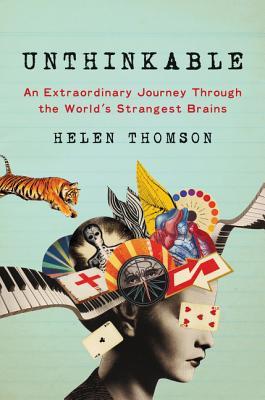
11. Unthinkable: What the World's Most Extraordinary Brains Can Teach Us About Our Own
By: Helen Thomson
Format: 256 pages, ebook
Our brains are far stranger than we think. We take for granted that we can remember, feel emotion, … read more
Want to Read $ 8.82Similar categories in Helen Thomson's Unthinkable: What the World's Most Extraordinary Brains Can Teach Us About Our Own book and Michael Shaw Bond's From Here to There: The Art and Science of Finding and Losing Our Way
- audiobook
- psychology
- neuroscience
- nonfiction
- science
"Our inability to understand our own minds is the price we pay for the ability to question it in the first place."-Helen Thomson, Unthinkable: What the World's Most Extraordinary Brains Can Teach Us About Our Own
"Back in that first lesson with Clive, I was told by my professor that 'If the brain were so simple that we could understand it, we would be so simple that we couldn't."-Helen Thomson, Unthinkable: What the World's Most Extraordinary Brains Can Teach Us About Our Own
"Science prides itself on explaining the parts of our life that can be measured and tested. Objectivity is, rightly so, the backbone of science. But I’d argue that subjectivity is its flesh and blood.…"-Helen Thomson, Unthinkable: What the World's Most Extraordinary Brains Can Teach Us About Our Own

12. Sea People: The Puzzle of Polynesia
By: Christina Thompson
Format: 365 pages, Hardcover
A blend of Jared Diamond’s Guns, Germs, and Steel and Simon Winchester’s Pacific, a thrilling intel… read more
Want to Read $ 14.99Similar categories in Christina Thompson's Sea People: The Puzzle of Polynesia book and Michael Shaw Bond's From Here to There: The Art and Science of Finding and Losing Our Way
- audiobook
- history
- travel
- nonfiction
- geography
- science
"Vision is not so much about just looking but knowing what to look for. It's experience."-Christina Thompson, Sea People: The Puzzle of Polynesia

13. The Dictionary People: The Unsung Heroes Who Created the Oxford English Dictionary
By: Sarah Ogilvie
Format: 368 pages, Hardcover
A history and celebration of the many far-flung volunteers who helped define the English language, … read more
Want to Read $ 14.99Similar categories in Sarah Ogilvie's The Dictionary People: The Unsung Heroes Who Created the Oxford English Dictionary book and Michael Shaw Bond's From Here to There: The Art and Science of Finding and Losing Our Way
- nonfiction
- history
- audiobook
"Murray took Dictionary work with him to the hospital when Ada was giving birth. If you look at page 2, column 1 of the first volume of the printed Dictionary, twenty-third line from the bottom, you w…"-Sarah Ogilvie, The Dictionary People: The Unsung Heroes Who Created the Oxford English Dictionary

14. The Blue Machine: How the Ocean Works
By: Helen Czerski
Format: 446 pages, Hardcover
A scientist’s exploration of the "ocean engine"―the physics behind the ocean’s systems―and why it m… read more
Want to Read $ 15.44Similar categories in Helen Czerski's The Blue Machine: How the Ocean Works book and Michael Shaw Bond's From Here to There: The Art and Science of Finding and Losing Our Way
- audiobook
- history
- nonfiction
- nature
- science

15. Local: A Search for Nearby Nature and Wildness
By: Alastair Humphreys
Format: 368 pages, Paperback
‘Agile, wryly funny and wise’ Robert Macfarlane A search for nearby nature and wildness After years… read more
Want to Read $ 9.99Similar categories in Alastair Humphreys's Local: A Search for Nearby Nature and Wildness book and Michael Shaw Bond's From Here to There: The Art and Science of Finding and Losing Our Way
- travel
- nonfiction
- nature
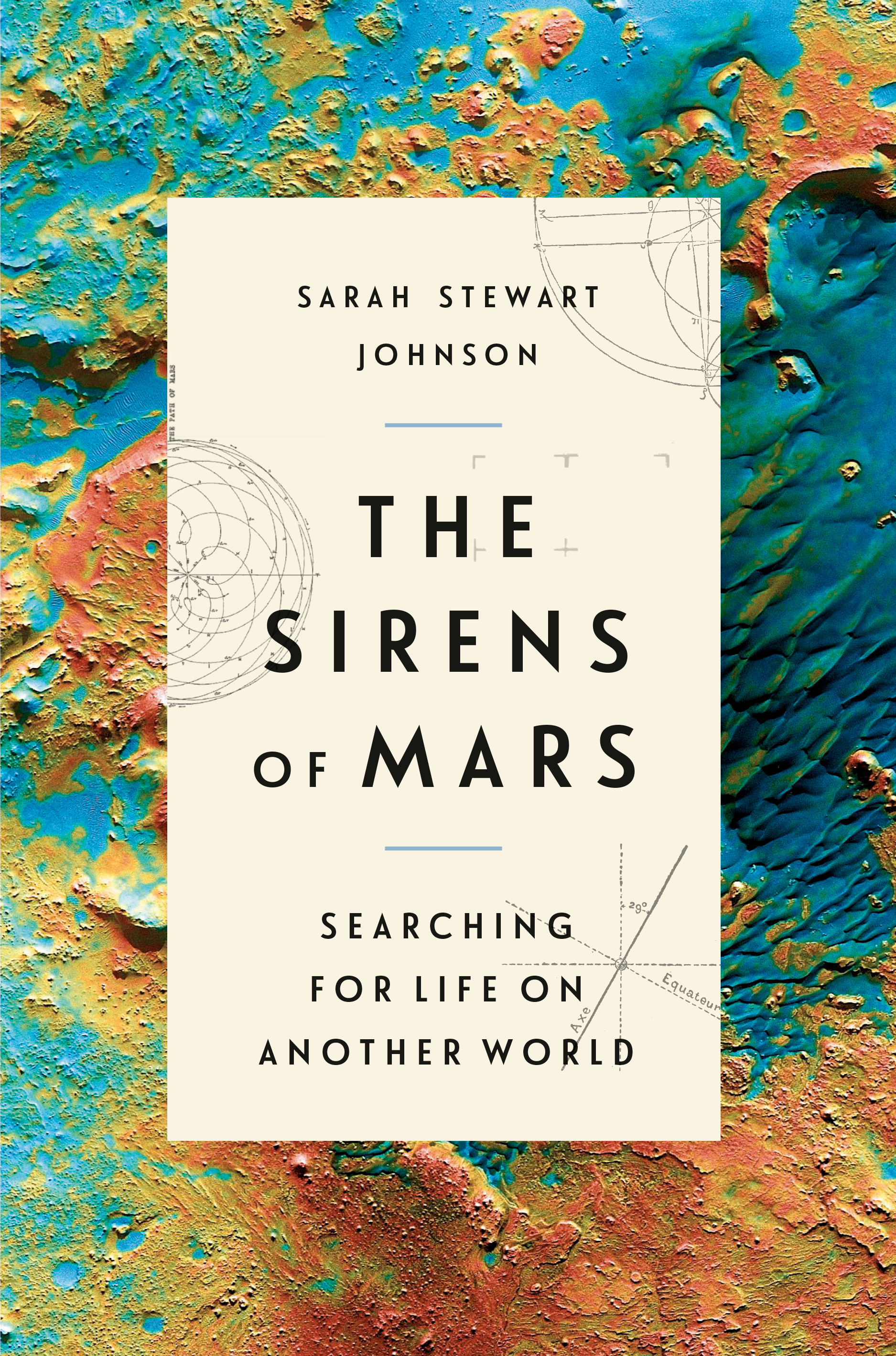
16. The Sirens of Mars: Searching for Life on Another World
By: Sarah Stewart Johnson
Format: 266 pages, Hardcover
A young planetary scientist intimately details the search for life on Mars, tracing our centuries-o… read more
Want to Read $ 7.99Similar categories in Sarah Stewart Johnson's The Sirens of Mars: Searching for Life on Another World book and Michael Shaw Bond's From Here to There: The Art and Science of Finding and Losing Our Way
- audiobook
- history
- nonfiction
- nature
- science
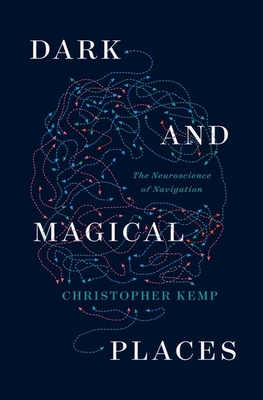
17. Dark and Magical Places: The Neuroscience of Navigation
By: Christopher Kemp
Format: 256 pages, Hardcover
How the brain helps us to understand and navigate space—and why, sometimes, it doesn’t work the way… read more
Want to Read $ 2.99Similar categories in Christopher Kemp's Dark and Magical Places: The Neuroscience of Navigation book and Michael Shaw Bond's From Here to There: The Art and Science of Finding and Losing Our Way
- audiobook
- psychology
- neuroscience
- nonfiction
- science
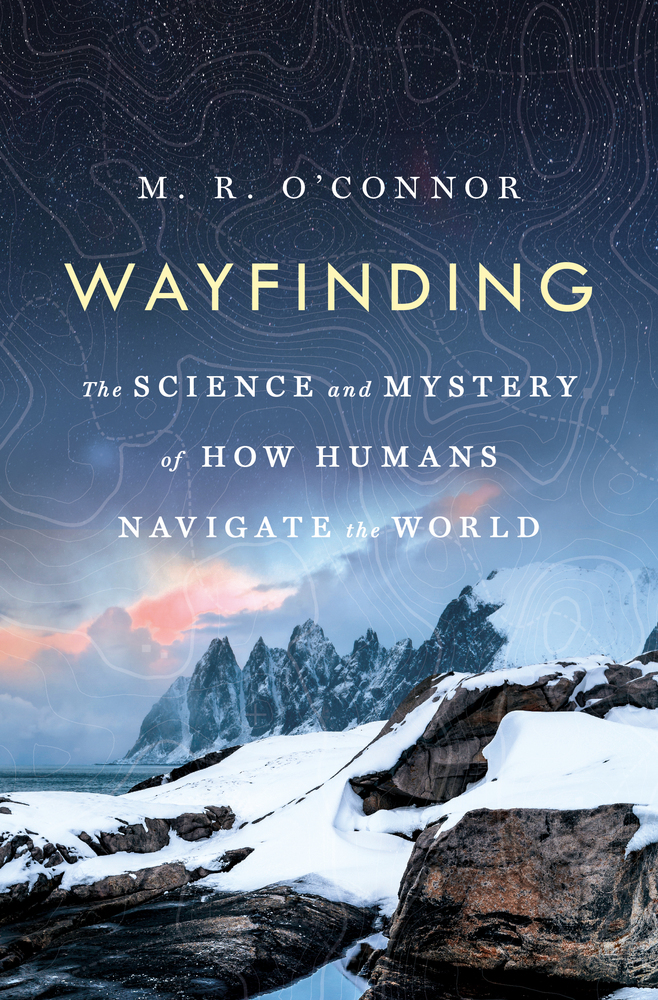
18. Wayfinding: The Science and Mystery of How Humans Navigate the World
By: M.R. O'Connor
Format: 368 pages, Hardcover
At once far flung and intimate, a fascinating look at how finding our way make us human. In this… read more
Want to Read $ 19.49Similar categories in M.R. O'Connor's Wayfinding: The Science and Mystery of How Humans Navigate the World book and Michael Shaw Bond's From Here to There: The Art and Science of Finding and Losing Our Way
- history
- travel
- psychology
- neuroscience
- nonfiction
- geography
- nature
- science
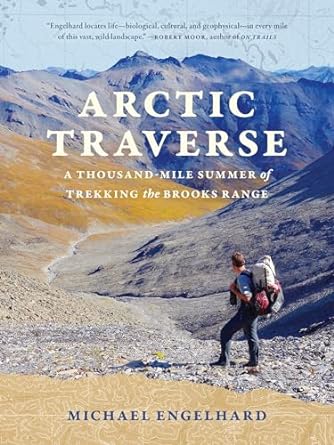
19. Arctic Traverse: A Thousand-Mile Summer of Trekking the Brooks Range
By: Michael Engelhard
Format: 375 pages, Kindle Edition
A lyrical memoir that interweaves wilderness, homeland, cultural connections, historical figures, h… read more
Want to Read $ 16.49Similar categories in Michael Engelhard's Arctic Traverse: A Thousand-Mile Summer of Trekking the Brooks Range book and Michael Shaw Bond's From Here to There: The Art and Science of Finding and Losing Our Way
- travel
- nonfiction
- nature
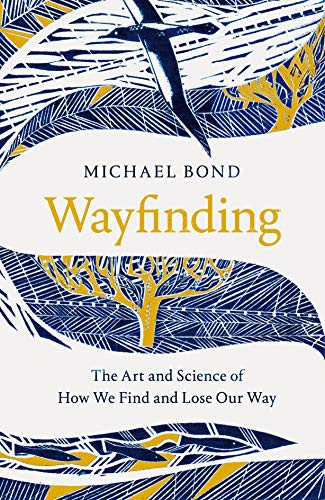
20. Wayfinding: The Art and Science of How We Find and Lose Our Way
By: Michael Shaw Bond
Format: 314 pages, Kindle Edition
The physical world is infinitely complex, yet most of us are able to find our way around it. We can… read more
Want to Read $ 9.99Similar categories in Michael Shaw Bond's Wayfinding: The Art and Science of How We Find and Lose Our Way book and Michael Shaw Bond's From Here to There: The Art and Science of Finding and Losing Our Way
- audiobook
- history
- travel
- psychology
- neuroscience
- nonfiction
- geography
- nature
- science
"On the island of Igloolik, where Aporta has conducted much of his research, a good navigator is known by the term 'aangaittuq', which means 'attentive'. Aangaittuq describes not just a person's wayfi…"-Michael Shaw Bond, Wayfinding: The Art and Science of How We Find and Lose Our Way
"When you're reading a conventional map, north is generally straight ahead, though this is entirely artefact of map-making culture and has no effect on orientation. Medieval European maps were 'east u…"-Michael Shaw Bond, Wayfinding: The Art and Science of How We Find and Lose Our Way


